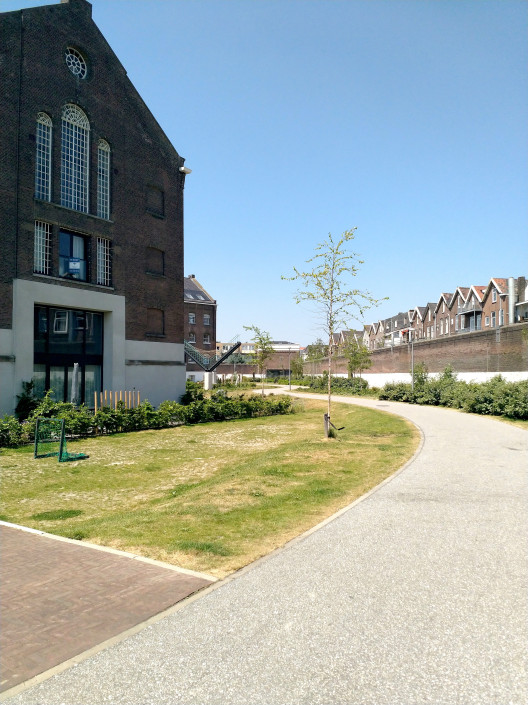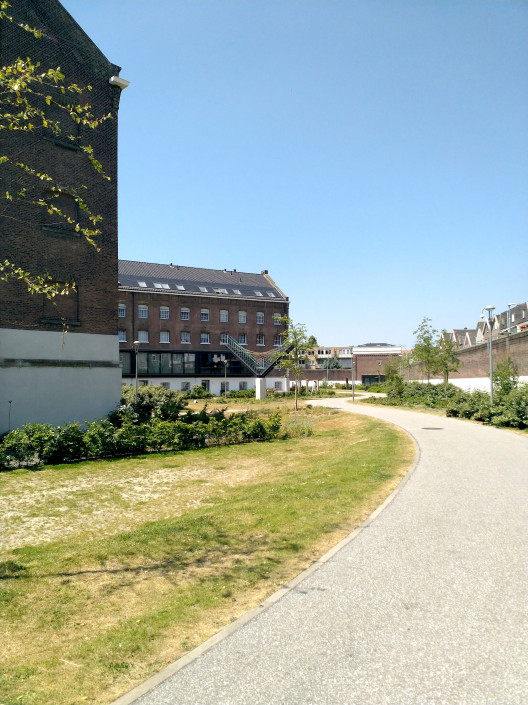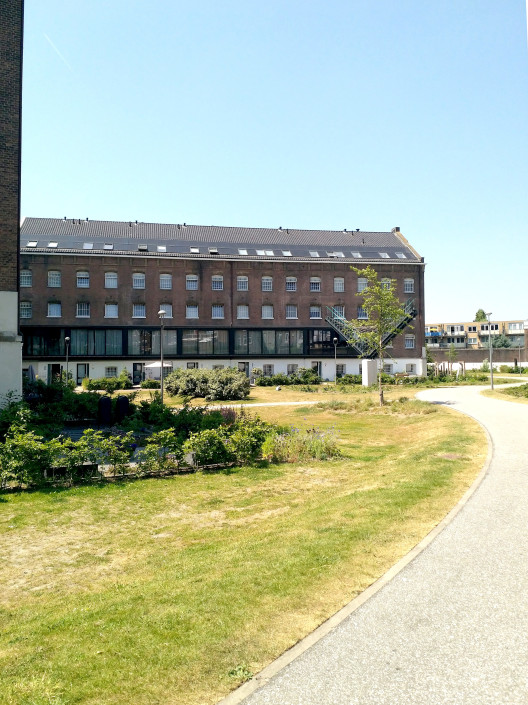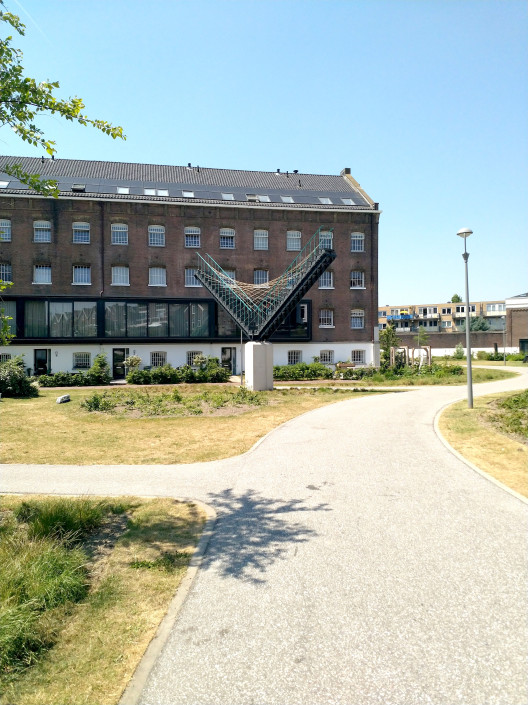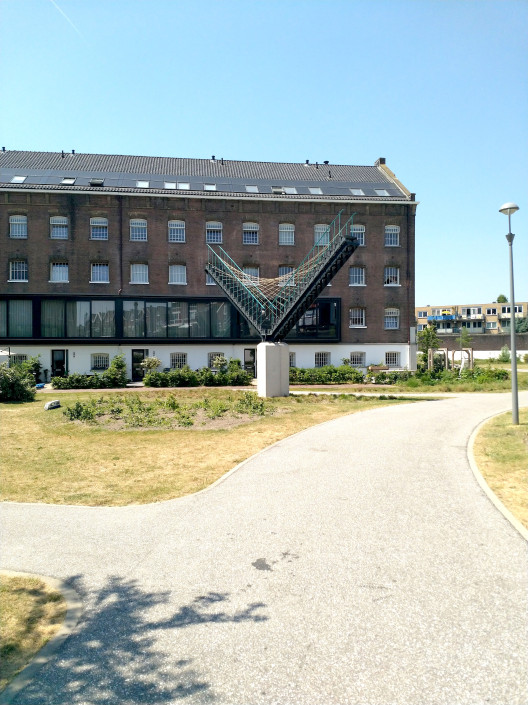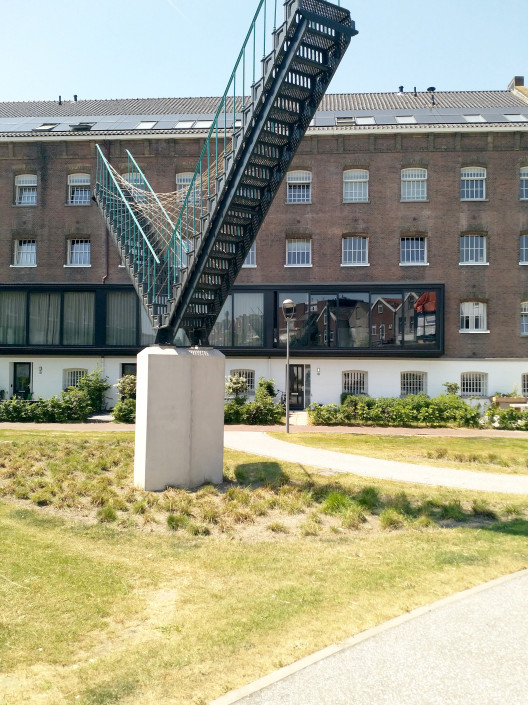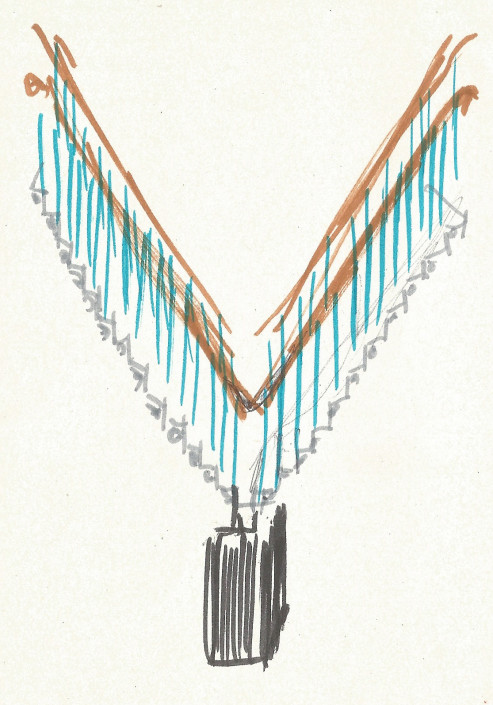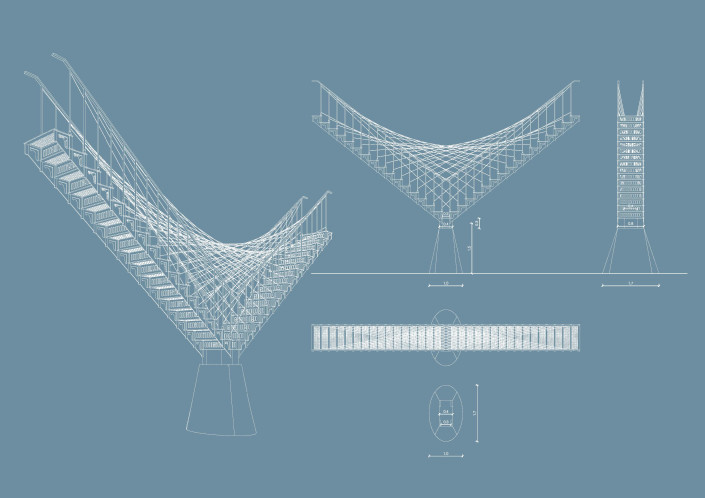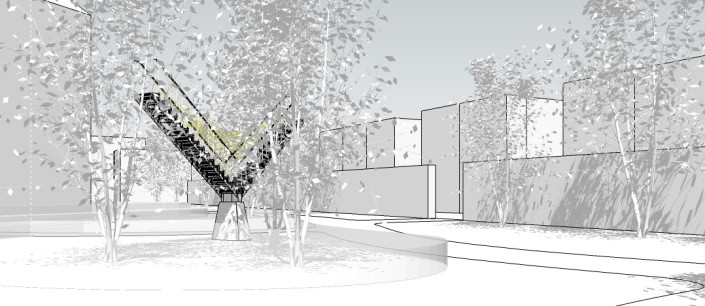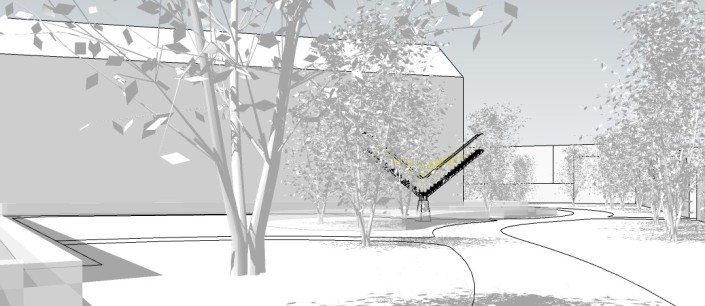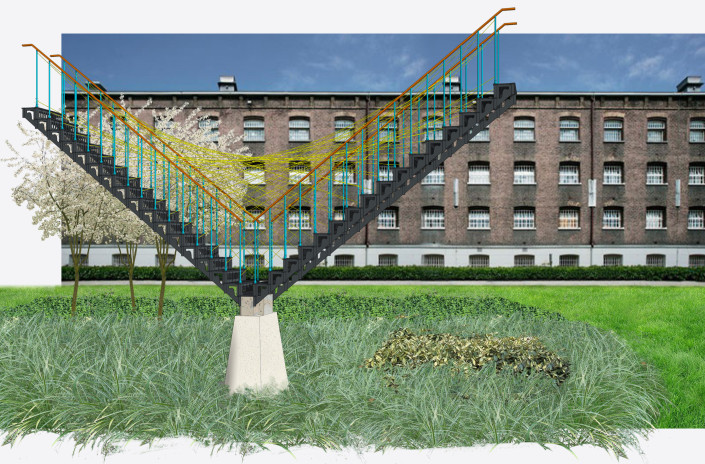PARABOLA BLUES
Rotterdam NL
It was exceptionally easy to design Parabola Blues and as easy to produce, all the choices felt like the right ones immediately. On the other hand this is a project that carries a very deep soul, therefore also the name Parabola Blues. It’s while waiting for the outcome of the competition that Madeleine Berkhemer, the artist behind it, passed away and for that it has a special space in my hearth.
On the 2nd of December the artwork Parabola Blues (2021) by Madeleine Berkhemer (1973-2019) has been revealed. It is a gift from real estate developer HD Groep and is part of the redevelopment of the former prison on Noordsingel into the residential complex Tuin van Noord. The gift to the municipality of Rotterdam has been placed in the publicly accessible garden of the residential complex and produced by Lens BV.
After an open call from HD Groep in 2019 to artists to realize a work of art for the publicly accessible garden of the former prison, the design by Madeleine Berkhemer unanimously came out on top of the other ten proposals
Robin Dijkgraaf, director of HD Groep, and Oscar Hartzema, son of Madeleine Berkhemer, unveiled the artwork together. In honor of the artwork and its creator, the former city poet and Poet Laureate wrote: Esther Naomi Perquin Opwaards.
Hier keert, in een triomfantelijke V, het kijken terug. Het levenslustig
lopen, de ongetelde stappen van de dagen voor het slopen;
de lijnen van de tralies staan nog in de lucht.
De vorm draait mee, naar potloodpunt, lemmet, injectienaald. Je blik
bepaalt het beeld. Hier is geen uitzicht dat je deelt, hooguit aspecten
van een taal die niet meer klinkt: de op- en neergang van
geroofde dagen, gestolen goud dat in het zonlicht blinkt;
van boven naar beneden loop je anders dan
vanaf de bodem weer omhoog.
Hier blijft de trede die ontbreekt, het toeval van het oog,
de stap die mist. Afstand, te groot om na te meten,
vormt de kleinste afstand die er is.
[text and images from the original competition document]
Several elements were spared in the transformation of The Noordsingel Penitentiary to housing complex and Madeleine was looking to reuse the one with the deepest meaning. With the stairs, she found the material that could make the connection between the past and the future: thousands of people walked on the steps, thousands of hands touched the railings. We want to preserve this physical memory, which is why the stairs will be cleaned, but not restored and stripped of their history. In addition to the physical relationship with the stairs, emotions are also connected to these elements. From the first time climbing the stairs as a new resident, to the last time coming down for release.
Madeleine decided to merge two stairs into an impossible staircase that no one will use anymore. The original stairs, in their original materialization and color scheme, is set on a sturdy plinth that rises from the varied vegetation. Both rooted and lifted. The pedestal is made of solid polished terrazzo concrete, which provides monumentality and elegance.
The whole will be crowned by stabilizing golden threads that cross between the two staircases and dynamically sparkle in the daylight.
The choice of location and the embedding in the new landscape ensure that the work is prominently present and visible from all sides. It reconciles the old with the new and the building with the green. At the same time, its appearance and meaning make it an object that escapes its history and gives the place a new life.
The ornate details of the original stairs, as well as their turquoise color, provide a generous gesture and beauty of a bygone era. They inspired Madeleine to see the sculpture as a jewel. As a result, the composition, of object, landscape and environment is a worthy relative of Madeleine’s recent work, De Verloren Parel in Het Park in Rotterdam. Both sculptures speak of her way of using femininity to create a new form of elegance that makes life more beautiful.

